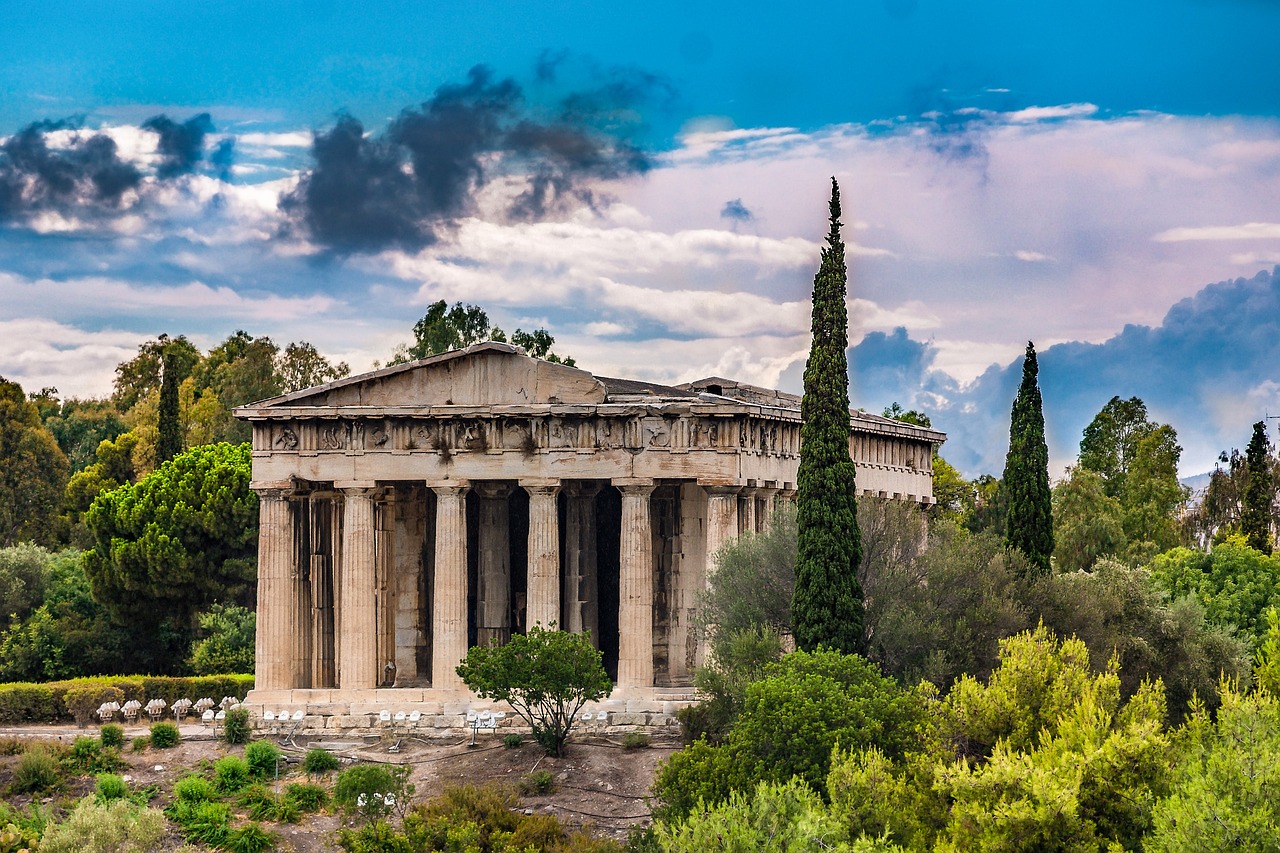Hephaestus: The Olympian God of Fire and Craftsmanship
Hephaestus, known as Hephaistos in Greek, stands out among the Olympian deities as the god of fire, metalworking, craftsmanship, sculpture, and stonemasonry. Often portrayed with a beard and wielding typical smithy tools like a hammer and tongs, he is sometimes imagined riding a donkey.
Notable Myths and Tales
Several myths highlight the life and exploits of Hephaestus:
- His dramatic fall from Olympus, where he was abandoned by Hera at birth.
- The tale of him capturing Hera in a cursed throne before eventually reclaiming his place among the gods.
- The infidelity of his wife, Aphrodite, who he ensnared with Ares in a brilliant net.
- His creation of Pandora, the first woman, as per Zeus’s command.
- A controversial encounter with Athena leading to the birth of Erikhthonios.
- The creation of the cursed necklace of Harmonia that doomed her lineage to tragedy.
- His involvement in the Trojan War, where he battled the river-god Skamandros using flames.
- The forging of the legendary armor for Achilles, at the request of the hero’s mother, Thetis.
These tales and more are elaborated throughout various mythological texts.
Hephaestus’s Family Lineage
Parentage
There are differing accounts regarding Hephaestus’s parentage. While some sources claim he is the son of Zeus and Hera, others maintain that he was born solely of Hera, resulting from her jealousy of Zeus’s independent birth of Athena. Some traditions even suggest he emerged from Hera’s thigh and devised a cunning plan to discover his origins, resulting in the famous trap of ensnaring Hera in a chair.
Offspring
Hephaestus’s progeny is often referenced in various myths, expanding his family beyond the immediate narratives of the gods.
Role and Characteristics
Hephaestus, more than just the deity of fire, embodies the nature of volcanic power and the essential role fire plays in craftsmanship. His artistry in creating tools and objects is seen as his divine gift, and fire itself is referred to as the “breath of Hephaestus.” Despite his delicate and often weak appearance from birth, he demonstrated resilience and skill; he lived in a grotto for several years after being rejected by his mother.
In mythology, Hephaestus is depicted as both kind-hearted and obedient, even as he suffered from the betrayals of those closest to him. His physical disabilities—most notably his lameness—are a recurring theme in his legends, adding dimensions to his character as he navigated the challenges of being an Olympian god.
His workshop, initially situated in Olympus, is described as a magnificent place filled with automated tools and extraordinary creations. Some later traditions depict his forge as being located in volcanic regions, emphasizing his association with fire and craftsmanship.
Aphrodite, often highlighted as his wife, changed narratives over time; initially referred to as Charis in some texts, she later became more widely known as Aphrodite in other conventions. Despite her infidelity, Hephaestus’s connection to her remains a significant component of his story.
Temples and Arts
Hephaestus was revered in various locations across Greece, with Athens hosting some temples in his honor. His likeness was crafted in sculptures and art, where he is depicted with attributes indicative of his divine role—tools in hand, showcasing the artistry for which he is best known.
The ancient Greeks often placed representations of Hephaestus within their homes, reflecting their reverence for craftsmanship and the divine.
Descriptions in Ancient Texts
Across classical literature, Hephaestus is seldom described in detail, but the information available paints a portrait of a capable yet crippled deity. He is characterized by his strong neck and chest, contrasted against his shrunken legs. His divine qualities reveal that he, despite physical disadvantages, could possess extraordinary skills, further reinforcing the mythological notion that true strength resides not only in physical prowess but also in creativity and intellect.
The Romans, referring to Hephaestus as Vulcan, incorporated this god into their pantheon while attributing their own cultural attributes to him.
Concluding Thoughts
His figure endures in classical literature and art, signifying the importance of craftsmanship and the complexities of divine relationships within Greek mythology. Hephaestus represents not only the physical manifestation of fire and metalwork but also captures deeper narratives of resilience and artistry in the face of adversity.



